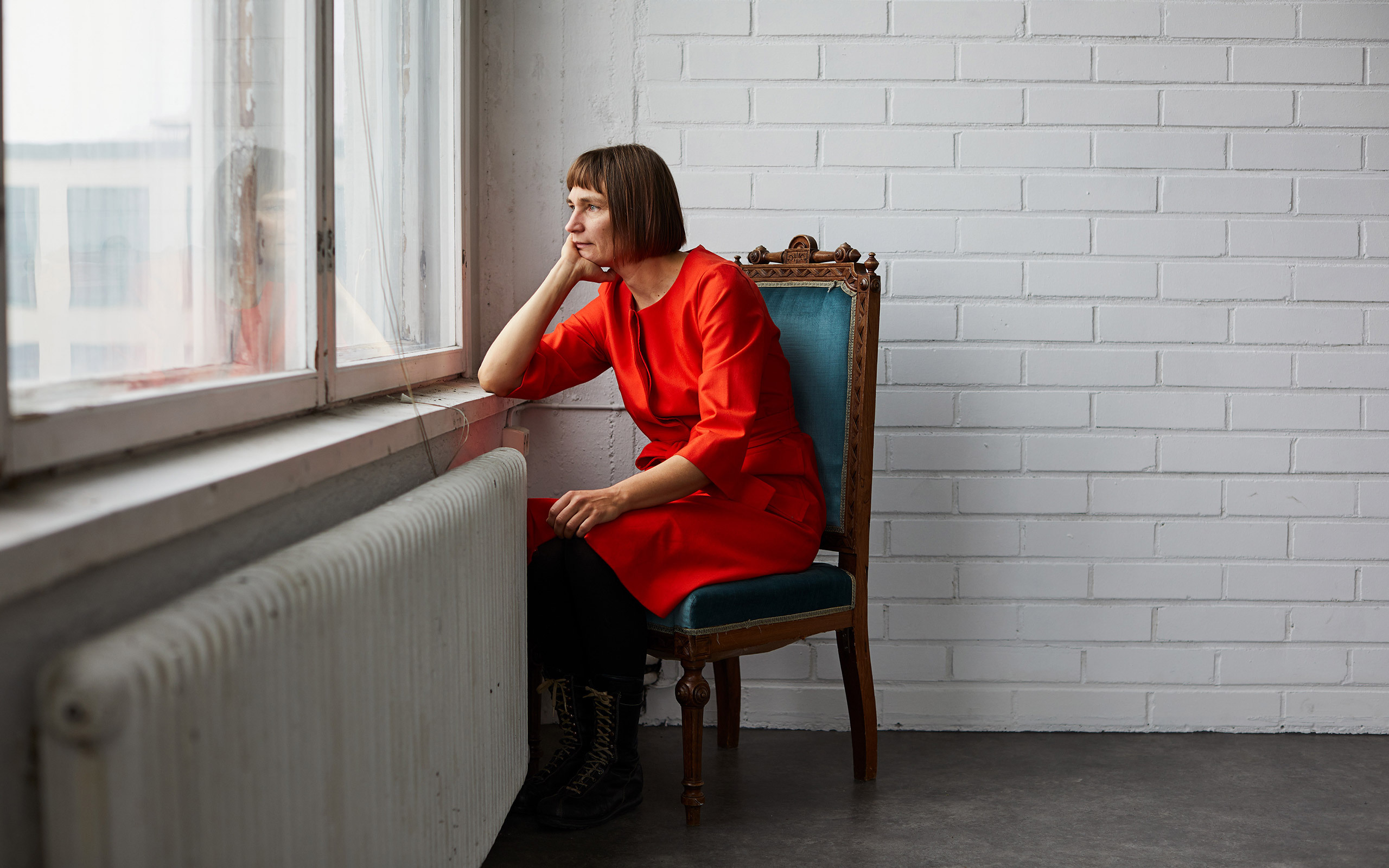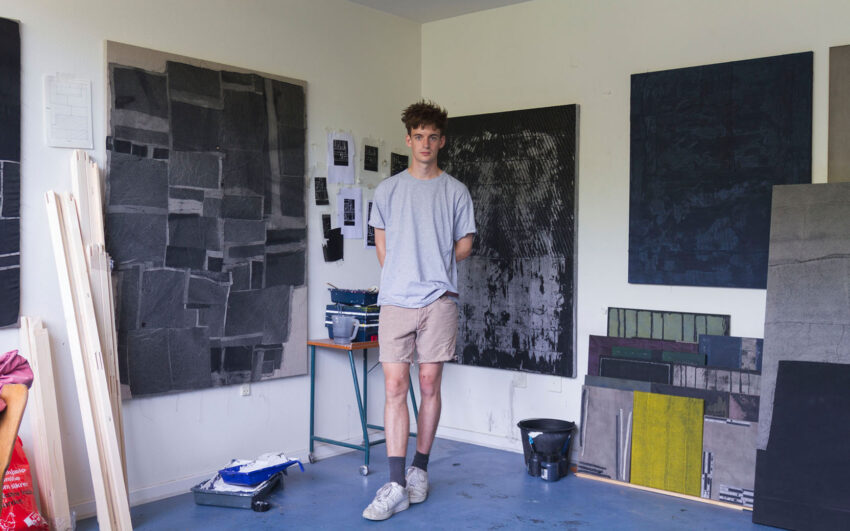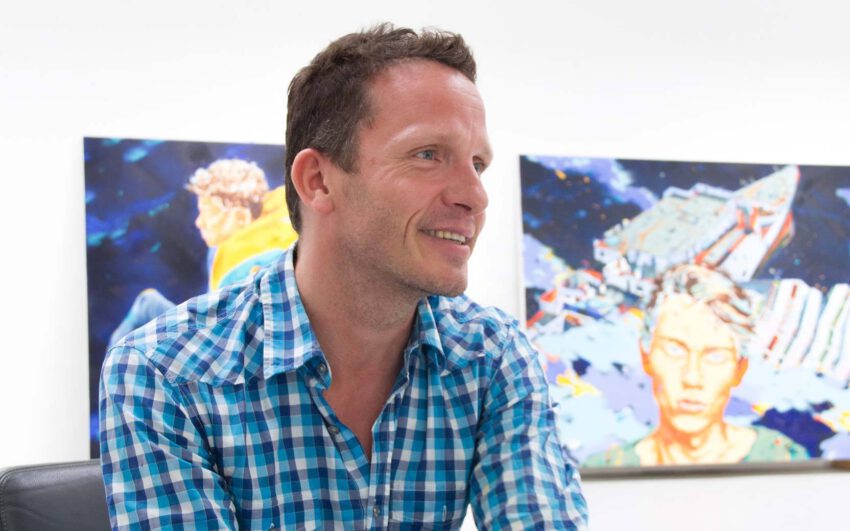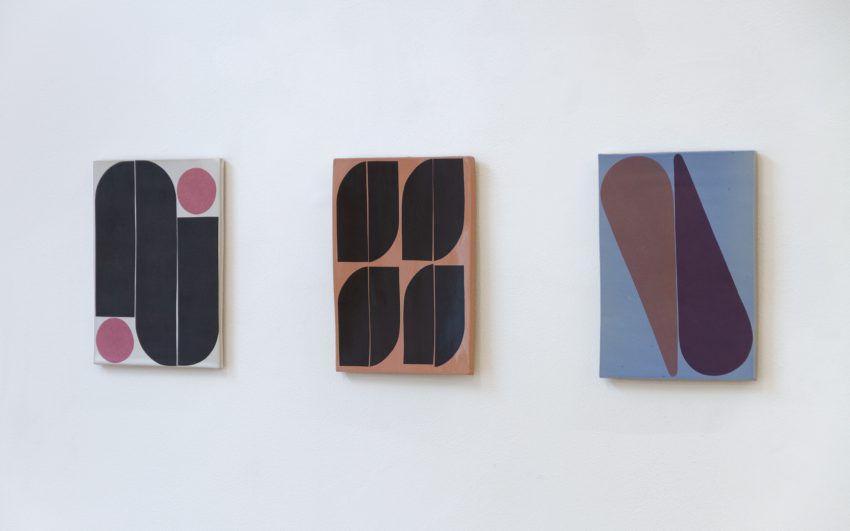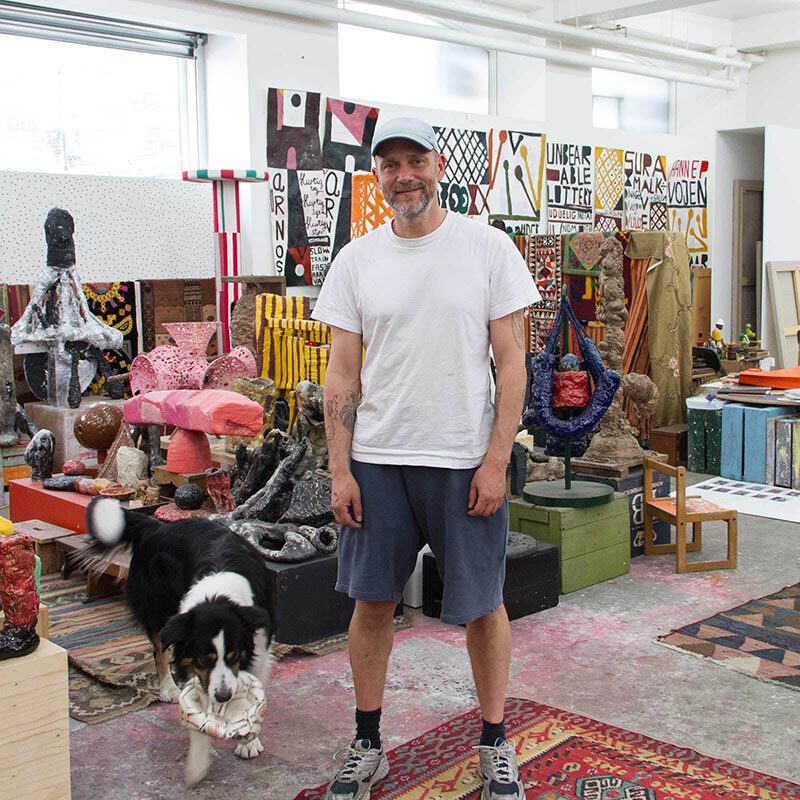The scene for contemporary art in Europe’s North is expanding and developing new dynamics as international collectors are watching the scene. With Nordic Notes we regularly cast the eye on the Nordic art and cultural scene, portraying its important actors.
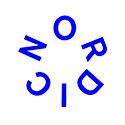
Finnish photographer Elina Brotherus deals with her own biography, the landscape genre, and art history in her photographs and films. She explores the possibilities of photographic self-dramatization while frequently referring to icons of nineteenth- and twentieth-century painting or, as she does in her recent works, to contemporary art from the 1960s and 1970s. Great sensitivity, formal mastery, and accomplished perfectionism characterize the visual language of Elina Brotherus. There are many possibilities for the viewer to associate him- or herself with her photographs.
Elina, what led you to art and how did you become an artist?
The path wasn’t really simple at all. It began with my parents who were both chemists. I lost them early and grew up with my grandparents. I always had this idea about what I would do in adult life and it seemed appropriate that I too would study chemistry. Perhaps I wanted to connect with my parents whom I had not known as adult. Therefore during my studies, I began to work in the laboratory of a professor who had also taught my father. He noticed quickly that I wasn’t really interested in this work and was displeased about it. His irritation at my attitude caused me to consider an alternative that I could pursue more passionately. Because I didn’t draw well enough and my self-confidence was low at the time, I decided against applying to the Art Academy and chose photography instead because in a sense the camera does the drawing. The selection process for the University of Art and Design in Helsinki was rigorous, only eight out of eight hundred applicants were chosen, I was the last to be accepted in class!
Besides photography, video technique is part of your art.
I have always been interested in video art and tried it out very early. The university didn’t have appropriate equipment with which to experiment, so I soon bought my own camera to work with although I had never studied film. My video works are often like still pictures, almost as photographs in which some movement occurs.
When do you choose to express yourself in photography and when in video?
I often do both and then I decide which of the two I want to present. Sometimes I show both versions, photo and video, side by side. In my work Le Miroir from 2000 I explore the theme of a foggy bathroom mirror in five photographs. In the following year, I treated the same topic in a video work. Many curators decide between the two works when they conceptualize an exhibition while I personally am excited about the difference between the still and the moving image and the resulting connections. Moving image can be uncanny and almost hard to look at because it is so realistic. In contrast, framed photographs appear like objects.
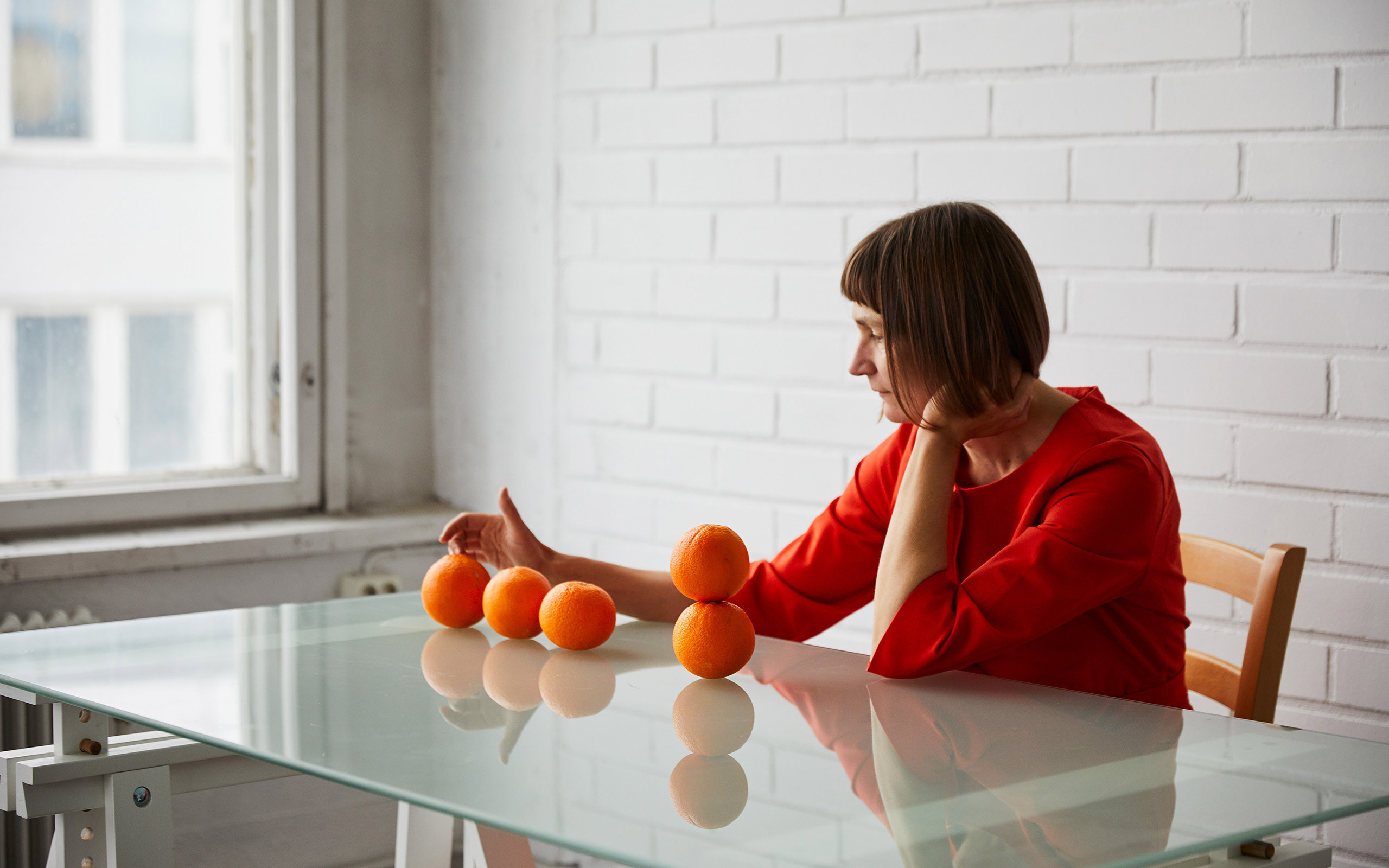
There are many elements like the mirror which can be found frequently in your work. Sometimes people or you yourself are present in the photographs while at other times the photographs are devoid of people. Can you talk a little more about your work process and these aspects?
Mirrors belong to those “fetishes” that I always go back to. When it comes to landscape and to choosing a location I entirely trust my eye. It’s a visual decision above all. If I think the picture needs a human presence then I add a person. As I like to work by myself turns out to be often me who appears in the picture. Furthermore, I am able to take more time and work better when alone. I have noticed that, when I work with a model, I tend to be too fast in the execution, because I do not want to take too much of that other person’s time. Another explanation for my presence in my photos is the autobiographical aspect. When something happens in my life that I want to talk about in my work, it obviously has to be me in the picture.
This autobiographical approach applies to your series Annonciation.
Yes, precisely. In this work I first of all documented for myself the part of my life in which I tried to become pregnant. So I am telling a story which is very real for many women and men, and which is rarely heard. And yet, not being able to have children is an important aspect in the discussion of motherhood. When curator Susan Bright saw these images she wanted to show them in her exhibition Home Truths. Photography, Motherhood and Identity. Initially I hesitated, but ultimately I decided that it was the right decision to allow the use of these photographs. They function as peer support for many people, because I show the story with an unhappy end. Women have a hard time in life. They simultaneously are expected to become mothers, establish a family and a career. There are burdening responsibilities and a lot of pressure on women.
What role does age play when one uses one’s own image so frequently in one’s own work?
That is an interesting aspect. The image of myself in one way is a word in my vocabulary and a signature feature in my work. When I began to use my own image for my photographs this happened because I was alone, nobody took pictures of me, but I wanted to know what I looked like. This was the point of departure for my presence in my works. Now, 20 years later, it’s interesting to observe the evolution of this familiar figure.
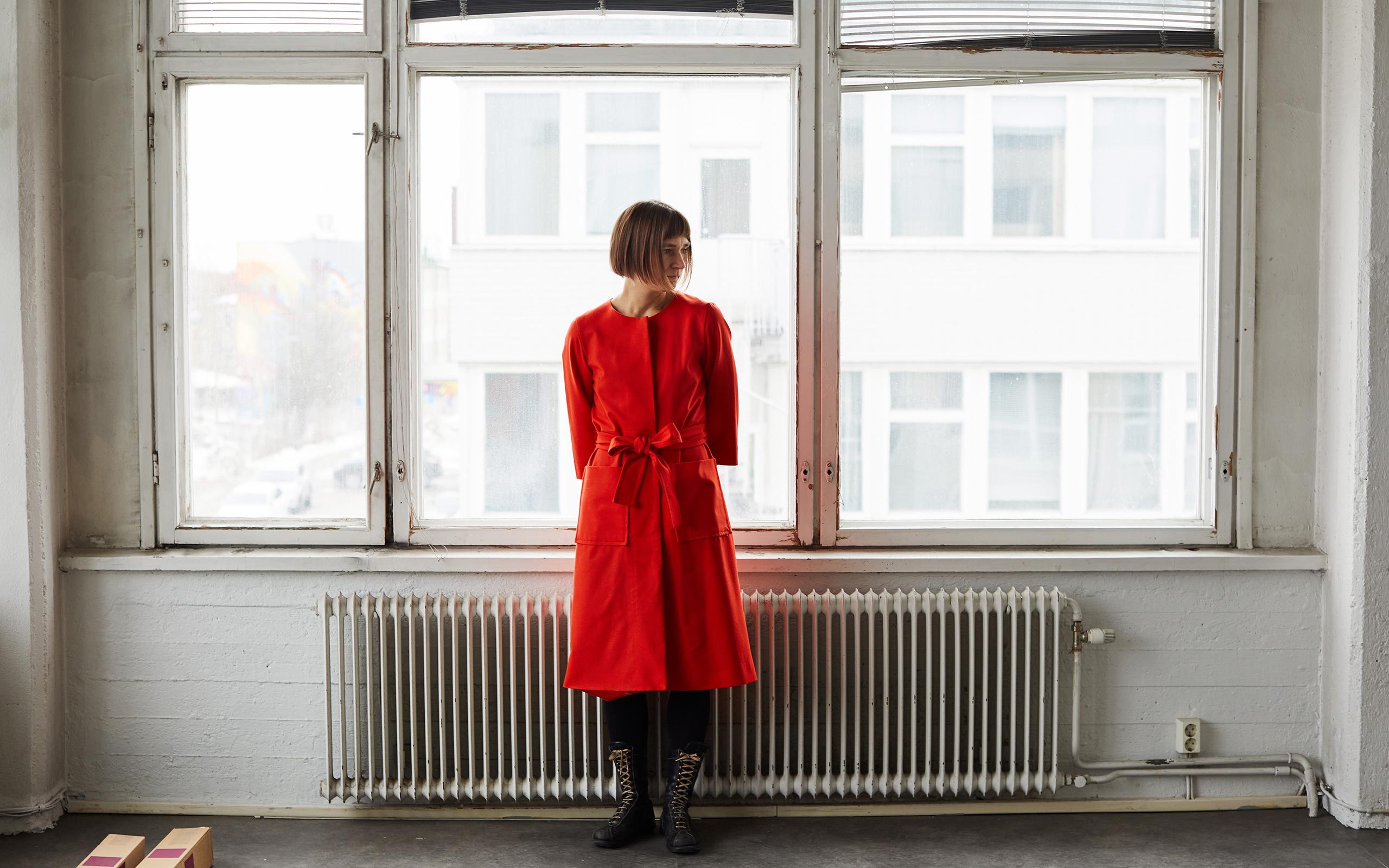
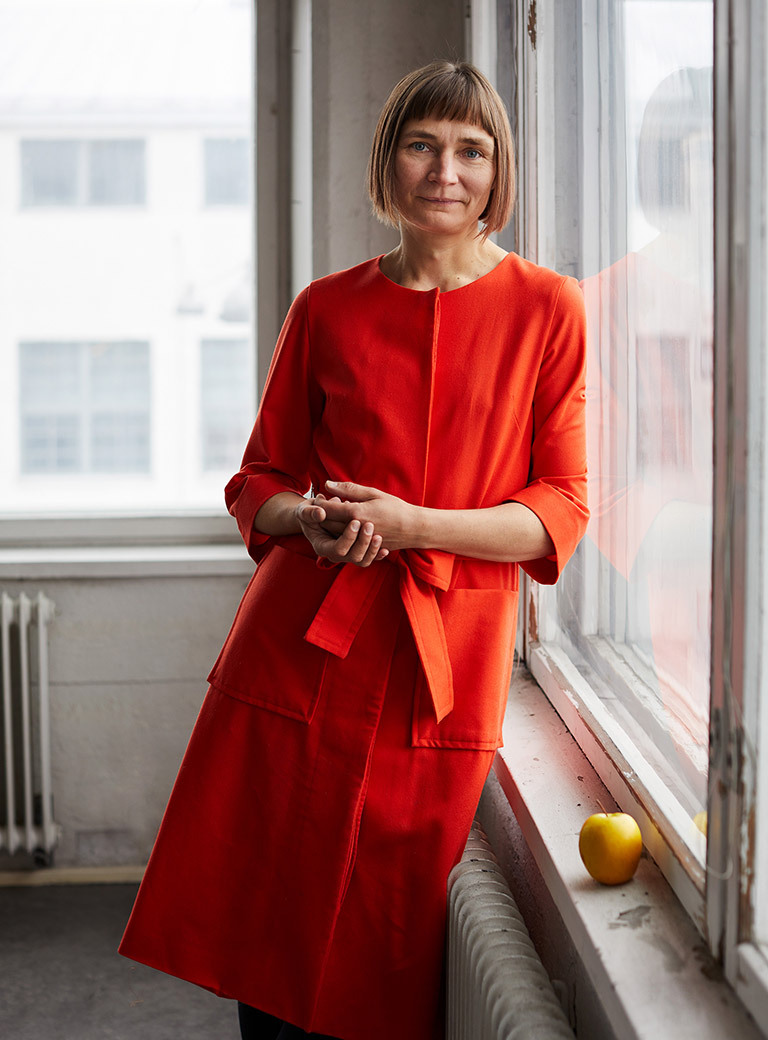
In your photographs Der Wanderer 1-5 you draw on the image of the painter Caspar David Friedrich. Was this appropriation or inspiration?
This is a good example of my interest in art history. An art historical approach was central to my series The New Painting (2000-2004) and recently I’m using it again in my Fluxus works since in 2016. Der Wanderer deals with an appropriation for my gender and the re-interpretation of the romantic, male view in painting. Instead of the heroic male depicted by Caspar David Friedrich, I placed myself on the mountain. One sees a woman who looks onto the world and invites the viewer to share the view with her.
Looking at your pictures, one often finds a figure seen from the back. What does it mean?
I consider the frontal view often too charged. One has the feeling as though one had to answer the gaze. Showing the back results in a sense of standing together, or if you like, side by side. I would like to appear inviting with this perspective and allow for a certain stillness. The focus is on the landscape which is seen together, in a shared contemplation. The spectator and person in the photograph are sharing the same pictorial space.
In Der Wanderer 2 one discovers a disquieting moment. The coat you are wearing moves in the wind, thus a small part of the photograph appears blurred – a detail that cannot be found in Caspar David Friedrich’s work.
Friedrich would never allow this blurring in his painting. Motion blur is a typically photographic phenomenon. In particular when one works with analog technique and slow film such elements can’t be controlled. You only see them after the development of the film. The blurring in this photograph is therefore not an element of style that I have deliberately chosen, but rather marks the decisive difference between painting and photography.
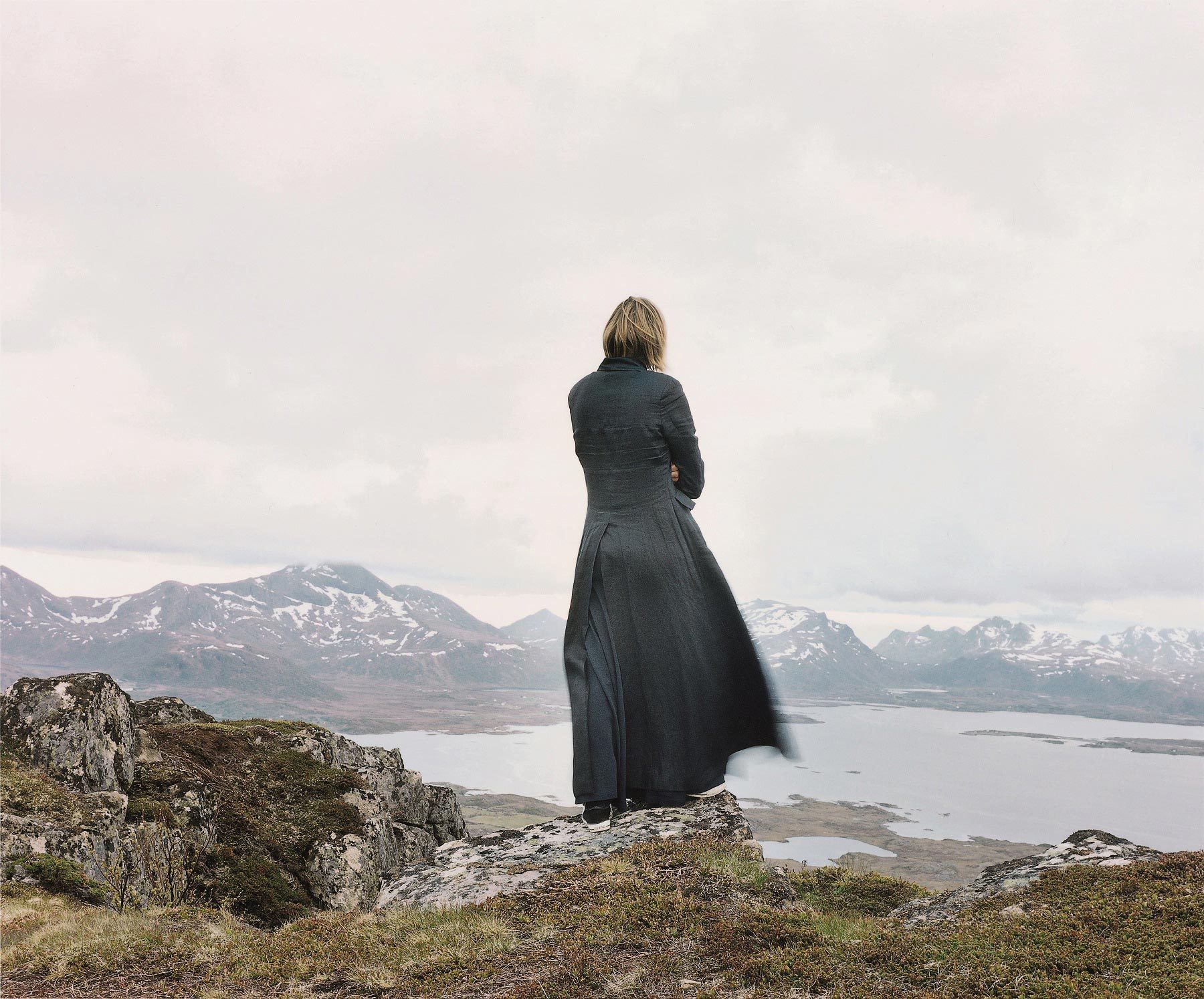
Elina Brotherus, Der Wanderer 2, from The New Painting, 2004
© the artist, courtesy: gb agency, Paris
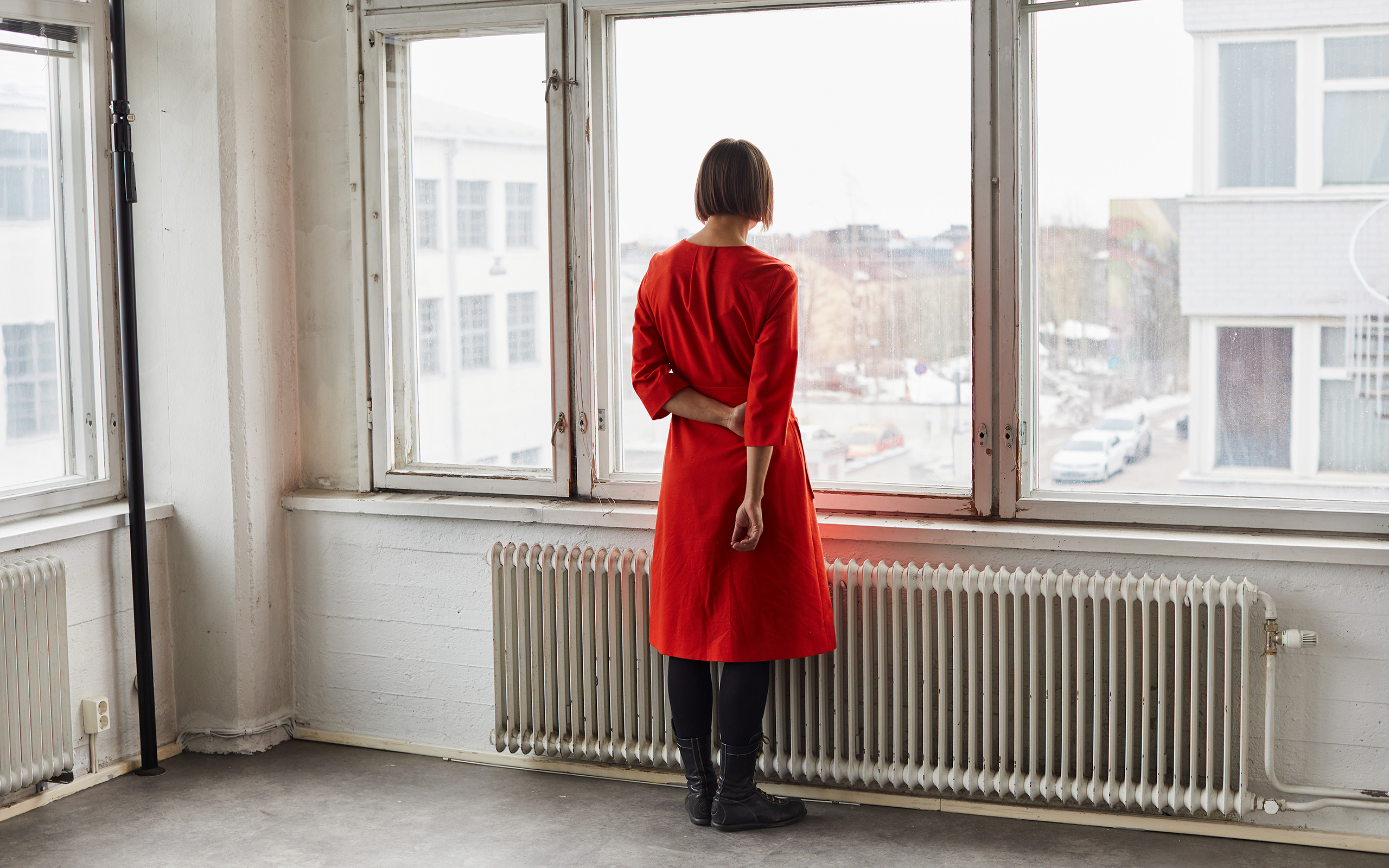
Your examination of the Fluxus movement, which developed in the 1960s, and which you have explored intensively since 2016 resulted in the appropriation of key Fluxus pieces into your own work. You also reference other artists, for example for your exhibition at Kunst Haus Wien in 2018 you worked with two Austrian artists, VALIE EXPORT and Erwin Wurm.
I had the opportunity to work with these two great Austrian artists. I selected some of their works and made versions of my own. In Erwin Wurm’s work it was the One Minute Sculptures that fascinated me. Together with Erwin, we executed three of them and I photographed us. With VALIE EXPORT I selected her piece called Stand up. Sit down and developed from it my work called Disobedience. I made T-shirts with the instructions and in the picture we do exactly the opposite. The beautiful thing in this picture is that we can observe the passage of time and the collaboration between different feminist generations. VALIE EXPORT of course looks different in 2018, but her iconic face, with which we are familiar from the 1970s, is immediately recognizable.
How are you going to continue your investigation of the Fluxus movement?
There is still much to do in this area. My work is based on very much research in order to find things, which I can use as an instruction. I take notes in exhibitions and look at online archives of big museums like the MoMA in New York. I’ve also met some of the Fluxus artists like the Swedish artist Bengt Af Klintberg. What is important to me is to not look up the original performances of these artists, but to really study their written protocols, the so-called “event scores”. With the scores there are no open questions regarding authorship. A score is an invitation for anyone to make the piece.
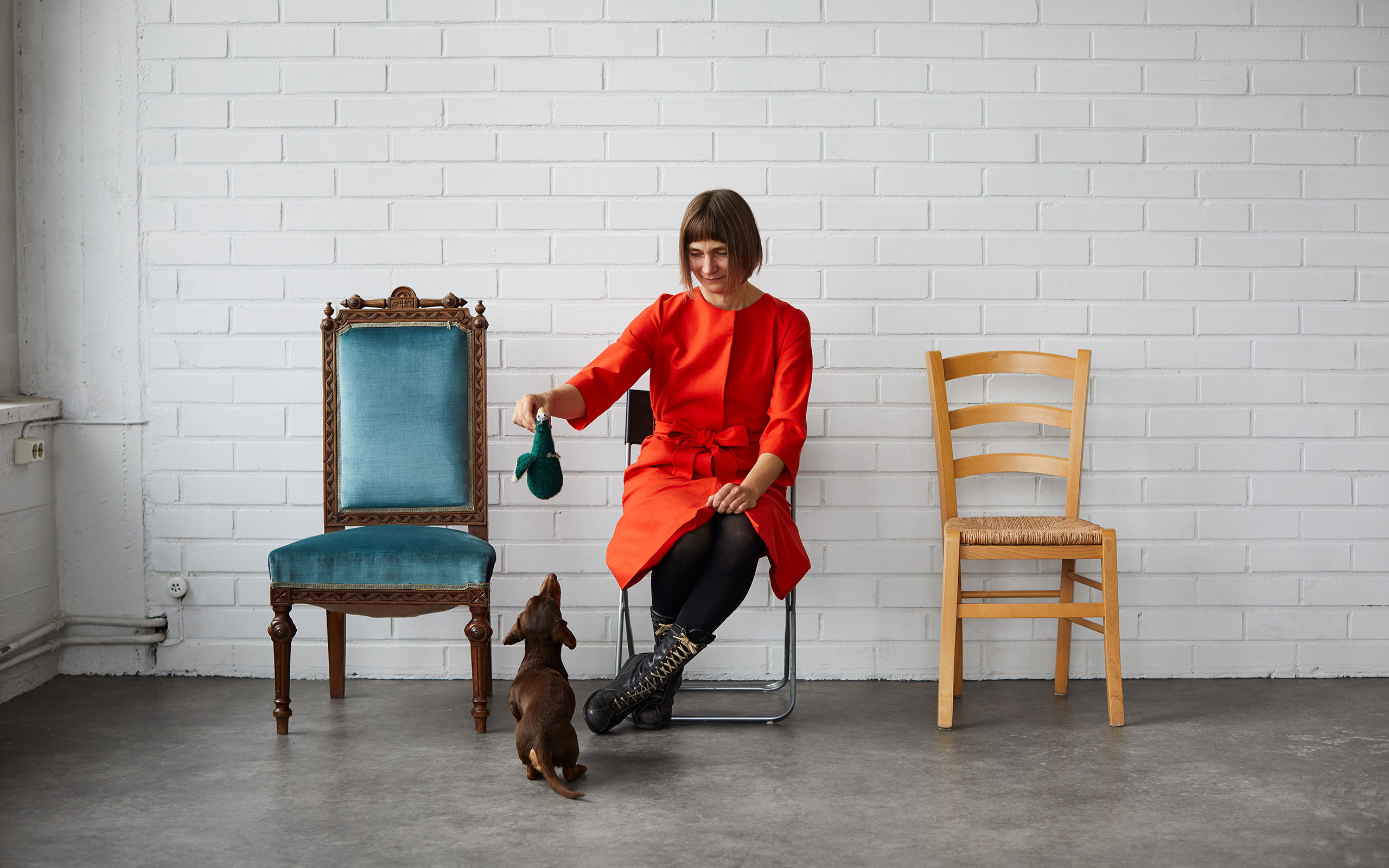
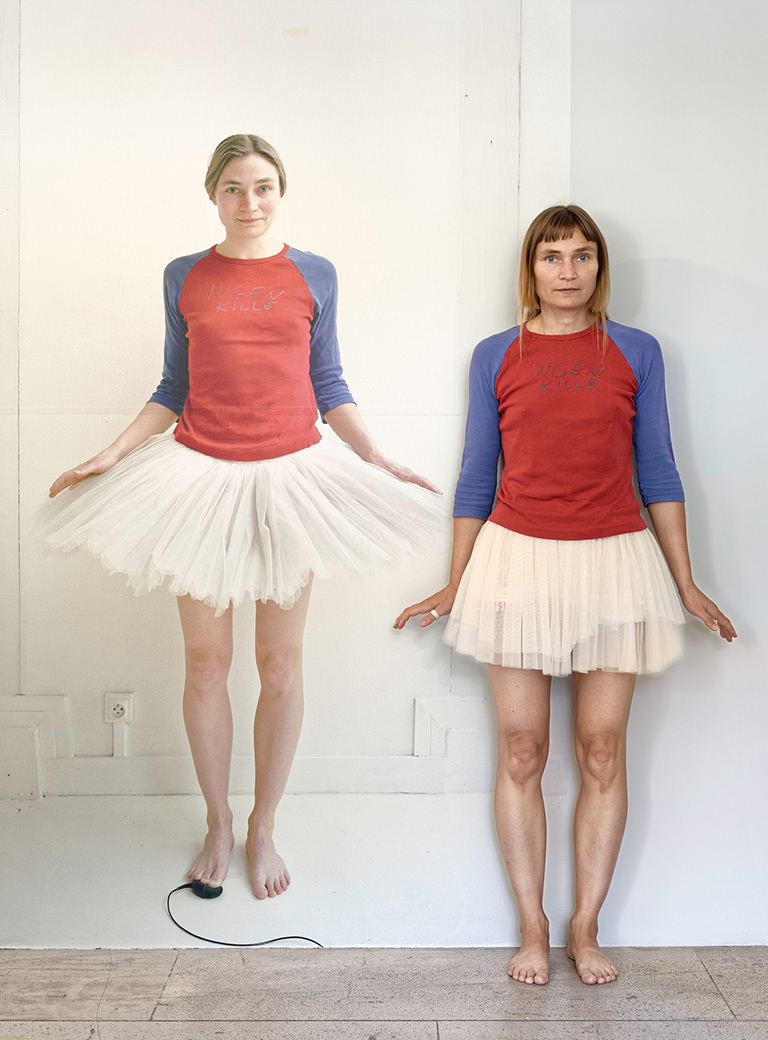
Elina Brotherus, Disguise Yourself as Another Object
– Wallpaper, from Baldessari Assignments, 2016
© the artist, courtesy: gb agency, Paris
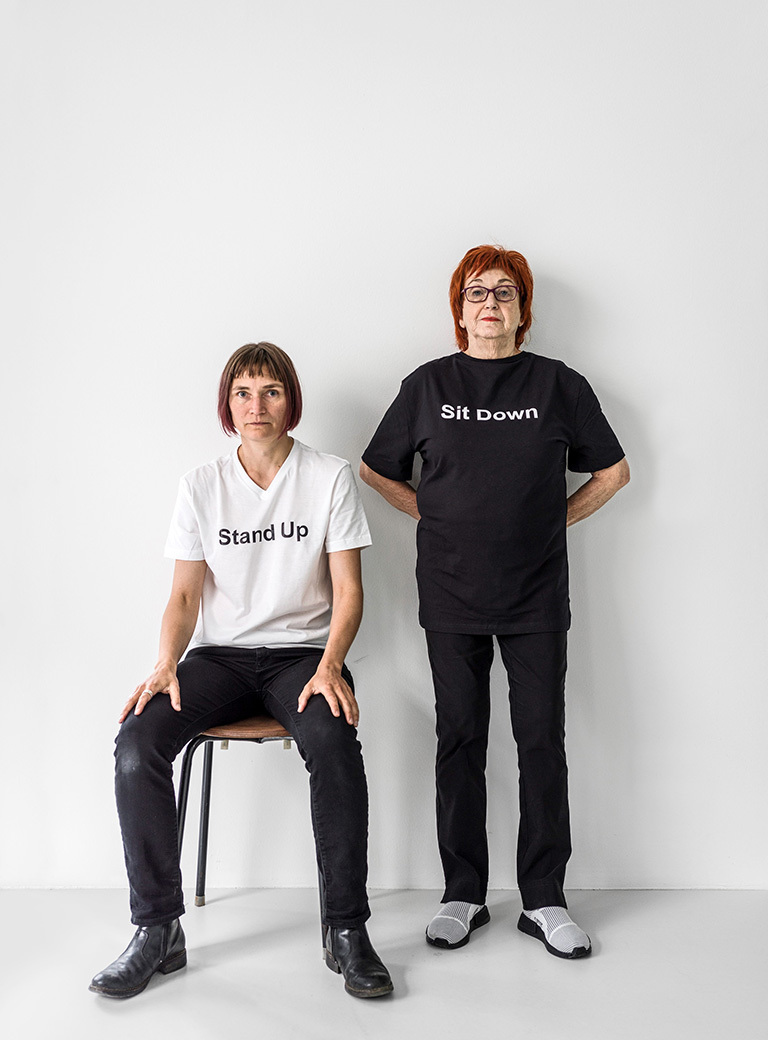
Elina Brotherus, Disobedience, 2018
(After VALIE EXPORT: Stand up. Sit down., 1989), in collaboration with VALIE EXPORT
© the artist, courtesy: gb agency, Paris
You have been active as an artist for twenty years now. How has the art world changed for women since the beginning of the 1970s?
As a woman I am happy to be in the art world today. For instance VALIE EXPORT has said in interviews that in her early days she had no established women artists to look up to. In the past, women in art were underrated and were often unaware of each others’ existence. Therefore they were unable to build networks. Even today we are in a state of imbalance, for although as many women as men are active in the arts, male artists receive more attention, and are the ones whose works are sold at high prices, furthermore male artists have a stronger representation in galleries and are offered more opportunities to exhibit in institutions. I often ask myself why this is so, since I don’t think that men are necessarily better artists. There must be other reasons for this disparity. Preference should be given to women until the imbalance has been redressed.
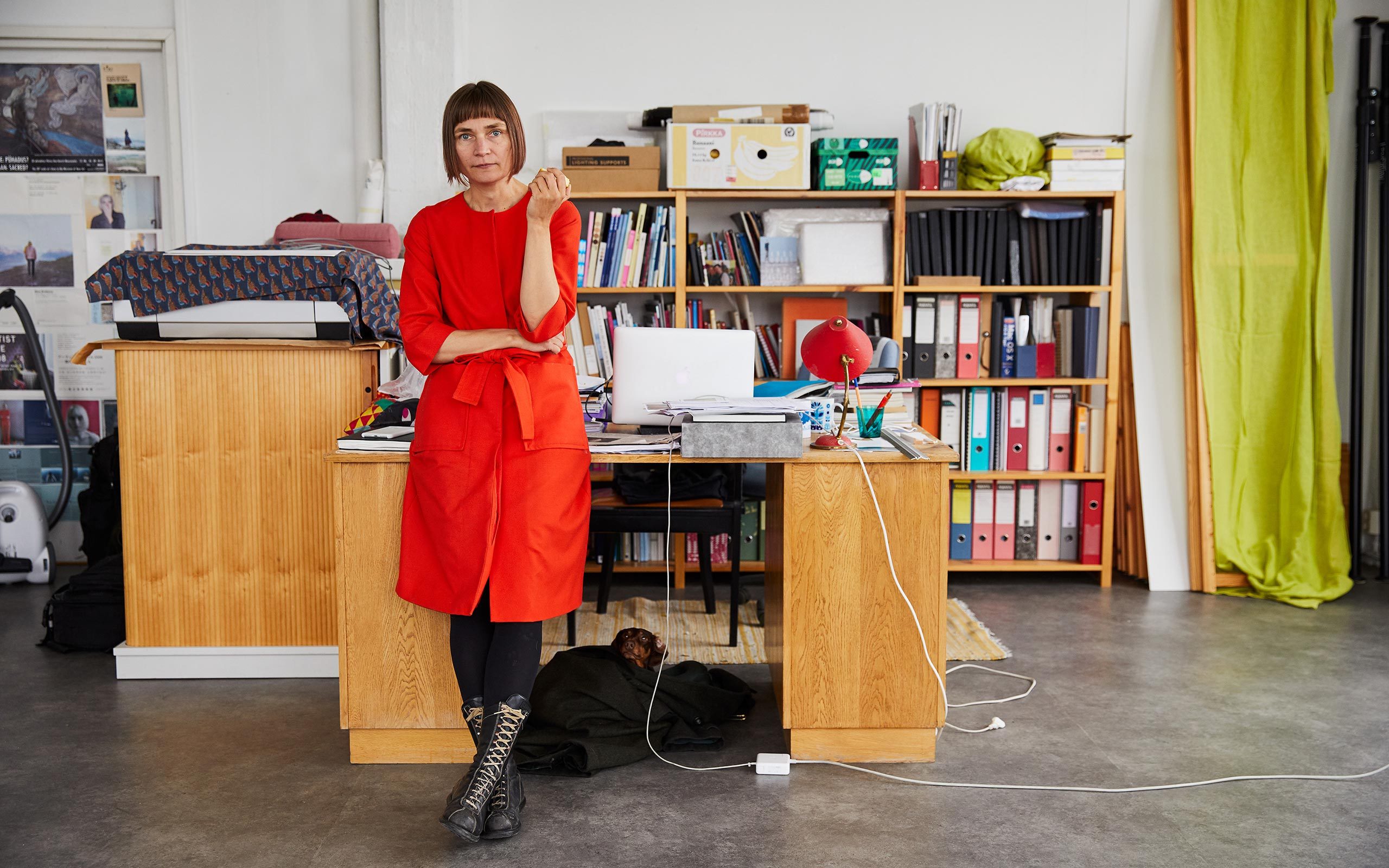
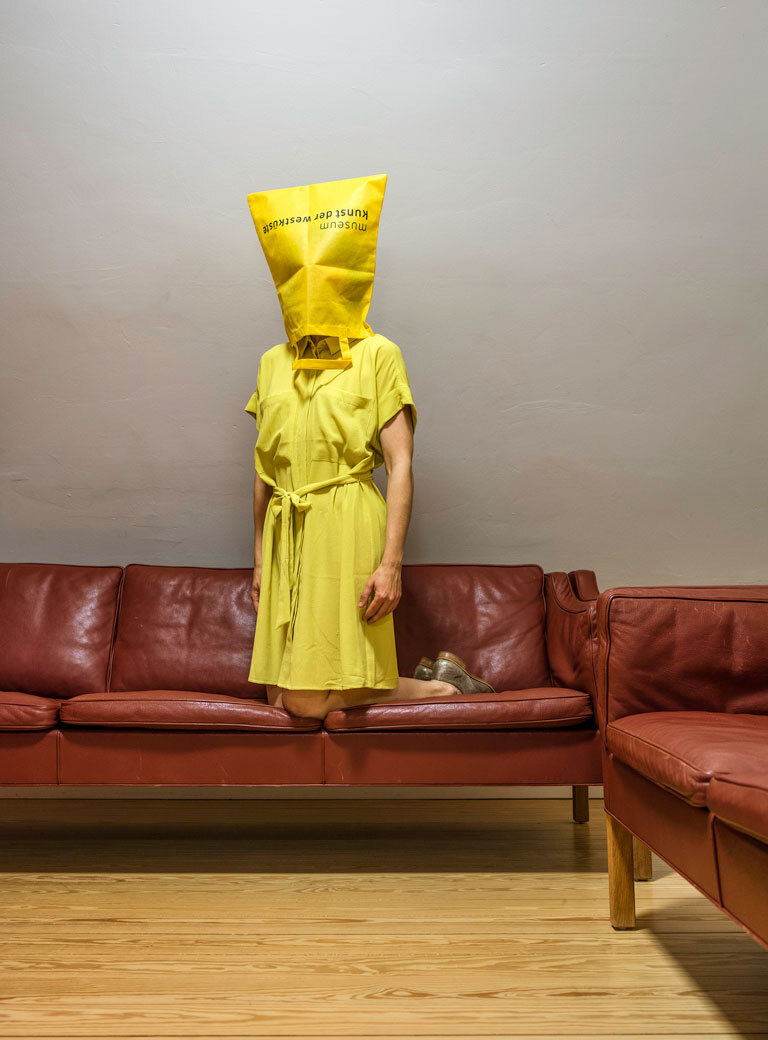
One Minute Sculpture (Museum Bag), 2017
After Erwin Wurm, Untitled (Bag), 2002, Put a museum bag over your head
(c) VG Bild-Kunst, Bonn 2021

One Minute Scultpure (Double Bucket), 2017
After Erwin Wurm, Untitled (Double bucket), 1999
(c) VG Bild-Kunst, Bonn 2021
Currently you are, along with Nicole Ahland and Thomas Wrede, participating in a show at Museum Kunst der Westküste on the North Sea island of Föhr. How did you arrive with this opportunity?
The first time that I came to Föhr was as a guest accompanying my husband Lauri Astala (a Finnish film director and video artist) who was taking part in the exhibition Empty Rooms: Die Schönheit der Leere (The Beauty of Emptiness) at Museum Kunst der Westküste in 2016. Knowing that I would be having a lot of free time while he was building the show I took my camera with me. So I hired a bike and took a few photos at that point already. I was so fascinated by the landscape during my excursions across the island that I even missed the opening dinner! (laughs)
You are showing as part of Museum Kunst der Westküste’s on-going exhibition series Made on Föhr. The title already suggests that the works in the show in some way must have a connection to the place. In what ways did Föhr leave an impression for you?
What is really striking is that the island is so empty. There’s no big forest, you can’t really get lost. But there are these expansive fields with a wide view, and the ‘empty’ sky. I think it could be extremely interesting to remain standing in one place in the midst of the wind and to be simply observing the movements of the clouds and the colours changing in the sky. And the open sea of course is always something that fascinates me.
The wind eventually became also the subject of a number of photo and video works that you created on Föhr. Besides one comes across a rather unexpected work series in the show: a series in which you re-enact One Minute Sculptures by Erwin Wurm. How did these come about on a North Sea island of all places?
As I mentioned earlier I had engaged myself a lot with the ‘instruction art’ of the 1960s and 1970s. When I discovered Erwin Wurm’s One Minute Sculptures they fascinated me in similar ways. That coincided with the period when I was also on Föhr for the first time. So I took a book with reproductions of his performative sculptures and re-enacted some of them in places on the island that, according to my own visual sense and artistic intuition, seemed suitable.
Interview: Alexandra-Maria Toth
Photos: Paavo Lehtonen


